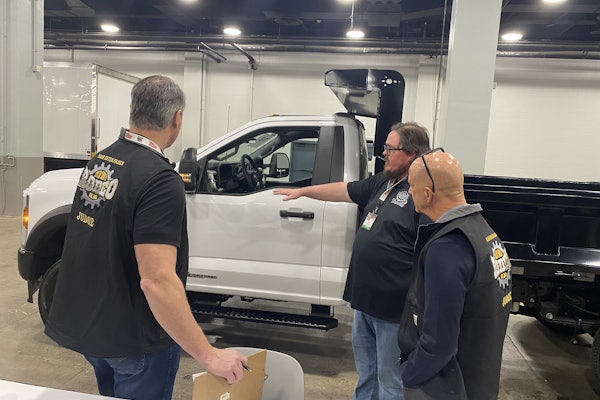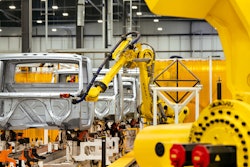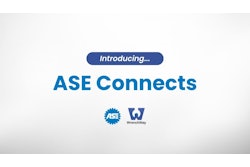Proper Use of Flat-tip Screwdrivers and Pry Bars
In the same manner that a hammer is designed to drive nails and a wrench is engineered to turn fasteners, a screwdriver is designed to tighten or loosen screws. Flat-tip screwdrivers are sometimes used for applications that they are not suited for, such as prying, striking and scraping, according to Snap-on.
Using a screwdriver blade incorrectly can result in damage to the screwdriver and the work material, as well as possibly cause serious injury to the user or bystanders.
Injuries often occur when a tool is used improperly in haste, such as when a technician is busy and grabs the nearest tool instead of the best tool for a specific job. Snap-on outlines the differences between flat-tip screwdrivers and pry bars and explains why these attributes are important.
- Material & Hardness: Screwdrivers typically exhibit a higher Rockwell hardness when compared to pry bars. This hardness corresponds to higher strength for turning force characteristics and better wear for long-term life of the product. A pry bar has a lower Rockwell hardness, which is more suitable for bending as is seen in prying applications.
- Shank Thickness: Screwdriver shanks generally are thinner than similar length pry bars. For example, a Snap-on MPBS12 Straight-tip Pry Bar uses a 3⁄8-inch square shank while a Snap-on SDD48 Flat-tip Square Shank Screwdriver uses a 5⁄16-inch square shank, making the screwdriver less suitable for prying.
- Insertion Distance: Pry bars are of the best quality when they are designed so that the pry bar is fully inserted into the handle and contacts the striking cap within the handle. Screwdriver blades, as well as some poor quality pry bars, typically are not inserted as far into the handle, which makes them not well-suited for leverage applications.
- Striking Design: Screwdrivers are not designed to be used as striking tools. Impact with a hammer can cause the handle to split or mushroom, fracture tips or allow the blade stem to penetrate the handle. Pry bars that incorporate a full-contact striking cap will transmit the maximum force to the pry bar tip and eliminate the problems noted with screwdrivers.
- Tip Geometry: Screwdriver tips and pry bar tips differ dramatically. For example, the flat tip on a Snap-on MPBS12 pry bar is approximately 3⁄32 inches while a SGD6BR screwdriver tip is only 1⁄16-inch thick. Moving up from the tip one inch, the thickness difference is 9⁄32 inch versus 3⁄16 inch, respectively. By placing more steel mass closer to the contact area, a pry bar offers better load capacity versus a screwdriver tip.
The bottom line, according to Snap-on, is that it is important to choose the right tool for the job in order to get the job done correctly, on-time and, most importantly, safely. Do not use screwdrivers for any prying, striking or scraping applications.
Replacement of a Two-piece Clutch Brake
If your customer experiences failure of a two-piece clutch brake assembly (Part No. 2104-127200) on a Mack CXU, CHU or GU model chassis equipped with an air-assist clutch, it is recommended that the single-piece clutch brake assembly (Part No. 2104-127760) be used as the service replacement, as shown in Figure 1.
Additionally, after replacing the clutch brake, always ensure that the clutch is adjusted properly according to the instructions outlined in service bulletin SB313005. Maintaining proper clutch adjustment will prolong the life of the clutch and clutch brake assembly, regardless of make or model of the clutch components.
Maintenance to Avoid EGR Cooler Failure
EGR cooler failure on a Mack ASET AC engine can, in many cases, be attributed to poor cooling system maintenance. Contaminants in the cooling system will enter the EGR cooler coolant inlet, plugging the small passages and restricting coolant flow through the cooler.
With restricted or no coolant flow, the cooler will overheat significantly and crack in the area of the exhaust outlet.
To prevent EGR cooler failures, the following information must be followed to avoid repeat failures:
- If replacement of the EGR cooler is required, discard the existing coolant.
- The system must be refilled with fresh, approved coolant (the same type of approved coolant that was originally drained, i.e., ethylene glycol, propylene glycol or extended-life coolants).
- Whether using a pre-mixed product or undiluted antifreeze mixed with water, either product must meet the Mack specifications outlined in the Maintenance and Lubrication Manual, TS494.
- Use “quality water” when mixing undiluted antifreeze. Specifications for “quality water” are also given in the Maintenance and Lubrication Manual.
Safety Recalls/The National Highway Traffic Safety Administration (NHTSA) has issued the following recalls:
- The aftertreatment regeneration device on 1,098 model year 2008 Kenworth T800, W900 and model year 2008-2009 T2000 and Peterbilt model year 2007-2009 379 and 387 trucks equipped with Caterpillar engines may develop a hole which could allow heat and flames to escape during the regeneration of the diesel particulate filter.
- On 13,000 2007-2009 model year Freightliner Cascadia trucks equipped with cab signal-detect and activation modules (SAMs), there is the potential for corrosion damage from water intrusion into the SAMs. This may cause electrical shorts or intermittent operation of tail lamps, stop lamps, side marker lamps and trailer lighting. In some cases, starter motors have activated without a key on. An electrical short in the cab SAM or chassis SAM may cause melting in the SAM or other electrical components which may cause a vehicle fire.
- The integrity of the hanger bracing on 294 model year 2005-2008 Heil Petro trailers with intra-lite frames could result in cracking at the rear of the suspension frame. Such a crack, if left unattended, could progress to an abrupt failure in the hanger, which could cause a crash without prior warning. Heil will replace the front suspension, two-attachment point bolted hanger cross brace with a six-attachment bolted cross brace kit to reinforce the frame structure. In addition, the brake air reservoir mounting will be changed from direct frame mount to bracket attachment mount.
- The vibration frequency from the suspension with super-single tires on 366 model year 2006-2009 Volvo VNL trucks equipped with super single tires, Bendix brake cam tubes and a Volvo air suspension may result in a fatigue crack of the mounting brackets for the brake cam tube. If left untreated, the crack can propagate and cause failure of the brake cam tube support bracket(s), which can result in loss of brakes at the corresponding wheel end.








